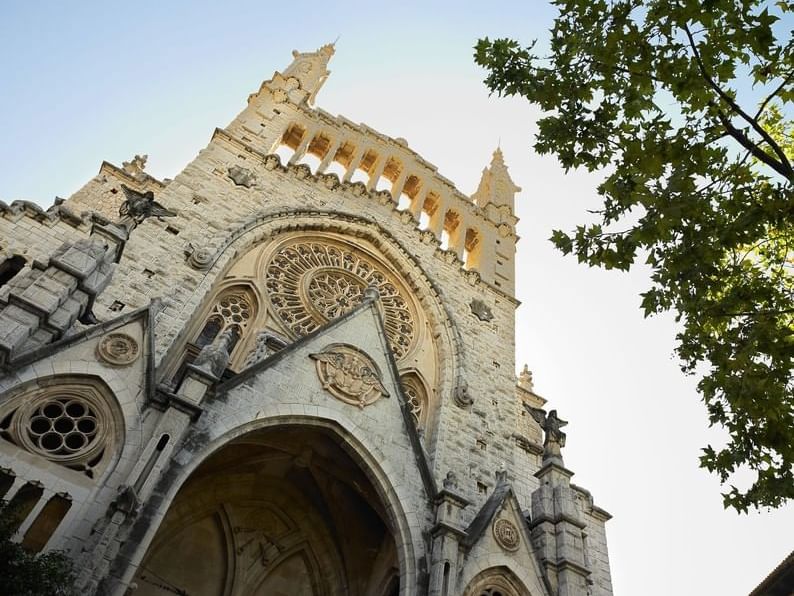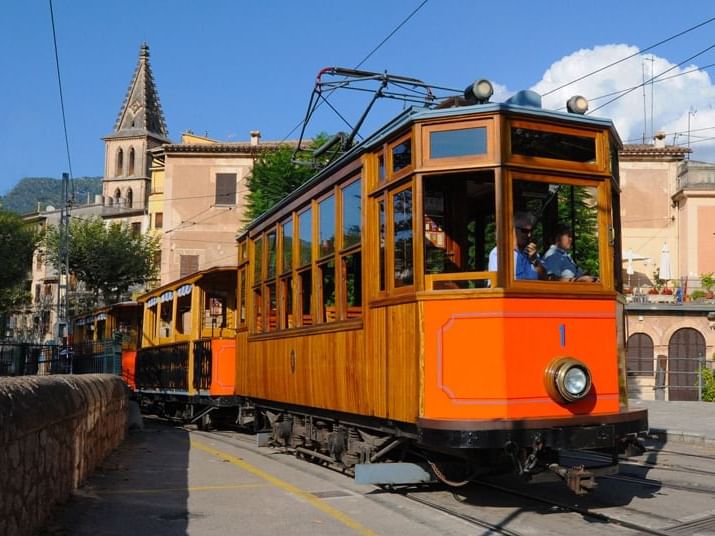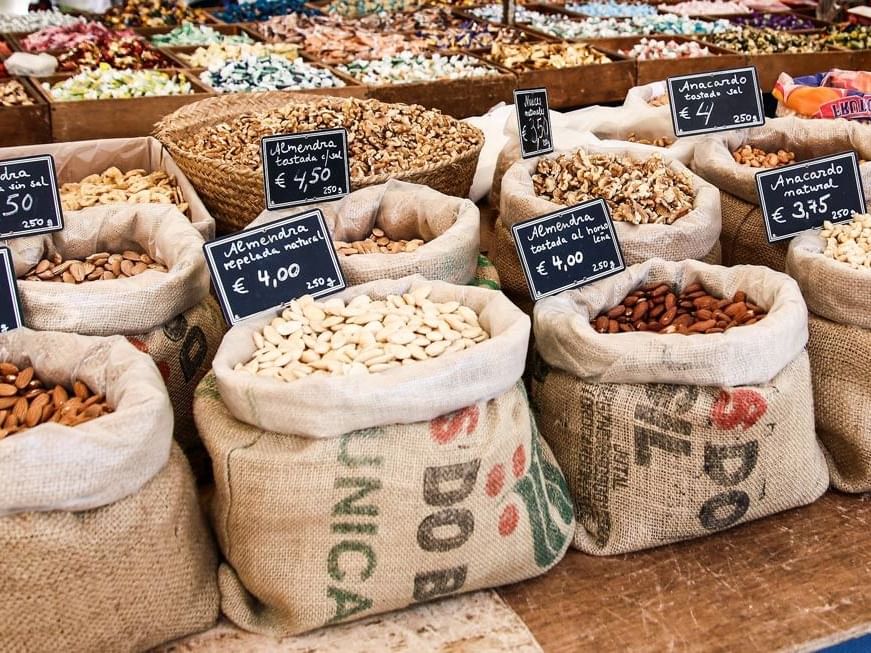The town of Sóller
Valley in the Tramuntana mountains
Sóller is a beautiful town on the North East coast of Mallorca. It is 3km inland of its port, Puerto de Sóller, surrounded by mountains, in a fertile valley which it shares with the village of Fornalutx and the hamlet of Biniaraix.
Sóller valley and port are about half an hour from Palma de Mallorca airport and have their own railway, tram and motorcoach services. The valley and the surrounding mountains, “the Tramuntana Sierra” are the favourite resort of people from all over the world, especially those who enjoy nature walks, culture, water sports and good food, or who simply seek a peaceful place away from the noisy tourism of possibly better known venues.
With its 13,000 inhabitants, Sóller is the commercial and cultural centre of the Tramuntana Sierra and the starting point of many itineraries following mountain and coastal paths and about the “valley of oranges”. The town square, with its imposing church, trees, open air cafés and mountain backdrop, is one of the most beautiful in the island. Surrounded by narrow streets with many shops, it is the popular meeting place for residents and tourists alike, especially on market days. From here one can take the antique Tram to Puerto Sóller to bathe or take a boat trip to the Torrente de Pareis.
 Bus to Palma Bus to Deia or Valldemosa
Bus to Palma Bus to Deia or Valldemosa
Suggested visits
Parish church of Sant Bartolomé
Built before 1236, this temple has undergone different modifications over time. It currently features a baroque structure (1688-1733), a neo-Gothic bell tower and a modernist façade designed by the architect Joan Rubió in 1904. Surrounding the building, you can see remains of Romanesque portals and windows and part of the 15th-century walled fortification.
The Sóller Bank
It was built in 1889 with the capital of the emigrants. The building is the work of Joan Rubió (1912), typically modernist. Highlights include the double flown tribune, the semi-circular portal and the forged windows.
The Posada the Can Prohom
The "inn" is the residence that the great agricultural owners of the Serra de Tramuntana owned in the city. The civil baroque structure is characteristic of Mallorca in the 17th century. Its appearance is solid and austere in decoration.
The house of the moon
Dated in the 15th century, it is a typical construction of popular architecture. Its most notable element is a figure in "marès" (limestone typical of the island) in low relief representing a moon.
La posada de Moncaire
This residential mansion is a sample of Baroque civil architecture in full transition to the neoclassical of the late eighteenth century. We must emphasize the cantilever of tiles painted with geometric, vegetal and anthropomorphic motifs in red and white colors.
The chuch of "La Sang"
A neoclassical, simple and robust temple that was rebuilt on the original chapel built between the years 1564-1572. It venerates the Christ of the Blood, a polychrome carving from 1556 and the beloved image of the "Mare de Déu de la Victòria" (1572).
Can Prunera
It is one of the most elaborate and artistic facades in Sóller, dressed between 1909 and 1911. It deserves a careful examination of its structure and the infinite details of stone, wood and metal that adorn the building.
The municipal market
Construction projected by the architect Francesc Cerdó and inaugurated in 1952. It is a functional building with a polygonal floor plan with several access openings and an arcaded corridor. A tour of the interior is recommended to the visitor.
Ca'n Nou
The Avenida de Cristóbal Colon is surrounded by gardens and follows the path of the Torrente Mayor, which was covered in 1912. On the left we can find the modernist building "Ca'n Nou", which has a tower, large windows with shutters and balcony.
The museum of casal the cultura
It is a modest family home with a garden built in 1740 that currently houses the city's ethnological museum. We recommend the visitor half an hour to get to know it.
The great way
This urban road includes the most relevant nucleus of regional modernist and historicist housing. On this same avenue we find the Can Dulce Cultural Center.
The old urban core
The streets of Vicario Pastor, Murta, Cristóbal pizá and Sant Antoni are some of the best examples of the old urban nucleus of Sóller. Away from the traffic of vehicles, the viewer can group the different stages of urban development in the last three hundred years.
Spain square
This square was born in the late 19th century and was completed in 1912 when the Torrente Mayor was covered. Its most outstanding element is the monument to the combatants of the Spanish Civil War (1940), the work of Gabriel Alomar.
The railway station
It is the old possession of Ca’n Mayol (1606), reformed between the years 1911-1912. On its facade we can see the tombstone dedicated to the promoter of the Sóller Railway, Jerónimo Estades.
The Convent de los Sagrados corazones
From the Plaza de España, the walker can head down Isabel II street, where several stately houses of modernist and regionalist style stand out. Above the street we find the Convent of the Sacred Hearts (s. XVlll), which has a cloister and a baroque church.
The Botanical Garden
This modernist palace, enabled as a science museum in 1985, houses several exhibition halls, whether temporary or permanent, related to the zoology, botany and geology of Mallorca. The attached Botanical Garden contains a remarkable collection of native plants from Mallorca, others from the Mediterranean islands and the Canary Islands.
The cementery
The Sóller cemetery is actually a garden, full of flowers and green plants. In it are beautiful statues of great aesthetical value made by prestigious artists. These lands were blessed in 1814.
07100 Sóller, Islas Baleares, España 07100 Sóller Spain


